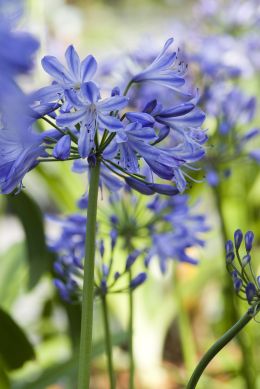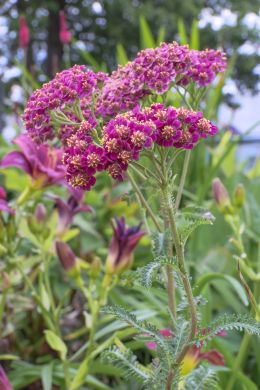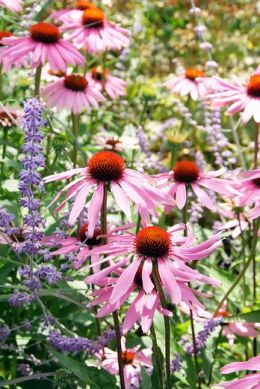Unfortunately, we have all felt the consequences of summers that are drier more often and for longer. Watering the garden becomes almost inevitable if we want to keep it looking good. Needless to say, all garden plants love a splash of water when it’s dry, but some plants can handle drought better than others. With these plants, your garden will continue to look beautiful and bright, even during dry periods.
A carefree garden filled with flowers
Borders with perennials that can withstand droughts will survive a period of drought better than perennials that need lots of water. If you also choose flowering plants to boot, you will enjoy the butterflies, bees and other insects that come to visit them. This is the way to make your garden a living space that you can enjoy even during dry summers.
Which garden plants can handle drought?
Many perennials are inherently resistant to periods of drought.
These plants are particularly good:
- ornamental grasses, such as Japanese forest grass (Hakonechloa macra), moor grass (Molinea), needle grasses (Stipa) and fescues (Festuca).
- summer bloomers: yarrow (Achillea), Japanese toad lily (Tricyrtis), Allium, African lily (Agapanthus), wild indigo (Baptisia), yellow wax bells (Kirengeshoma), coneflower (Echinacea), white gaura (Gaura) and Jerusalem sage (Phlomis).
- plants with thick or grey furry leaves: stonecrop (Sedum) and hedgenettle (Stachys).
- Mediterranean herb plants: thyme (Thymus), rosemary (Rosmarinus) and lavender (Lavendula).
 Climate-proof garden
Climate-proof garden
With the changing climate, dry spells are increasingly interspersed with heavy downpours. If you replace your garden paving with perennials, you will not have any water logging problems. The rainwater will easily flow away in between the plantings. What’s more, plants have a cooling effect. Another benefit during prolonged hot and dry spells!

Tips & facts
- Water new perennials regularly after planting to help them root properly. Well-rooted plants can handle drought better.
- Cover the soil around the plant with a layer of organic material (mulch), such as finely cut prunings, cut grass, bark or compost. This will prevent the soil from drying out too quickly.
- If you want to fill pots with drought-resistant plants, do bear in mind that like all plants in pots, they will require more water than plants in the open ground.
For more information about drought-resistant perennials, visit www.perennialpower.eu
To view drought resistant perennials at Crocus click here
Mark Snelling
All images copyright
If you have enjoyed reading our blog post then why not fill in the form provided to allow us to send you our blog posts and newsletters by email. For all major gardening products, visit our shop from the menu above.

